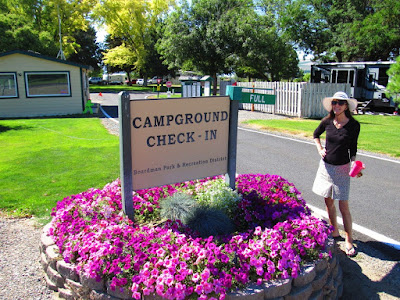More Oregon History: Shaniko
We embarked on this route where the marks of time are stamped across the landscape for 286 miles. It traverses prehistoric fossil beds, mining boomtowns and surprising sights. It is a trip through the state’s historical timeline.
Our history stop was a repeat visit to the town of Shaniko.
Last time we visited, we dined here, at the Columbia Southern Hotel (1902), now known as the Shaniko Hotel. Built in the Italianate style, it has been a hotel, bank, stage stop, saloon, dance hall, and general gathering place and is the most imposing building in town. The building was listed on the National Register of Historic Places in 1979 with the entire Shaniko Historic District getting that designation three years later. Other historic buildings are the Sage Museum, Shaniko School, City Hall and Jail, Wedding Chapel, and the Wool Warehouse.
AND WHAT HISTORY! No town in Oregon has seen more rapid growth and decline in a single decade than Shaniko. From 1901 to 1911, the town went from being the Wool Capital of the World to the liveliest ghost town in the state. Shaniko, incorporated in 1901, was at one time the fifth largest city in Wasco County, shipping millions of pounds of wool and carloads of grain and livestock to market each year.
Long story shorter, by 1900, the year the railroad came to town, Shaniko’s population was 172. The land around Shaniko was not good farmland, but it was adequate as sheep and cattle country. Many homesteaders sold their 160 acres to ranchers, who increased their herds. Incoming freight in 1901—primarily farm equipment, building materials, fence posts, and coal and wood fuel—amounted to 1,400 railroad cars, making Shaniko one of the largest inland shipping centers in the world.
The January 1, 1901, Shaniko Leader boasted: “As a shipping and distributing point, Shaniko is second to no city in Oregon (except Portland),” servicing “the vast inland territory of varied resources, extending into California.” Shaniko, the paper wrote, was the mecca of the inland territory. Columbia Southern Railway backers built huge warehouses for building supplies and farm products—large enough, for example, to hold 4 million pounds of wool.
Shaniko’s population—600 in the 1910 census—began to decline, helped along by two fires that destroyed much of the business district in 1910 and 1911.
This cat followed Steve around. I'm including this for my feline loving friends. You know who you are!
Now Shaniko is a living ghost town. The people there are amazingly friendly and the one shop I visited was welcoming and appreciative. We'll return again and hope for a re-boom to this once great town.
Night found us at the Boardman Marina & RV Park located right on the Columbia River. Sweet spot!
What a campsite!!!
“A good river is nature's life work in song.”
― Mark Helprin





















0 comments:
Post a Comment